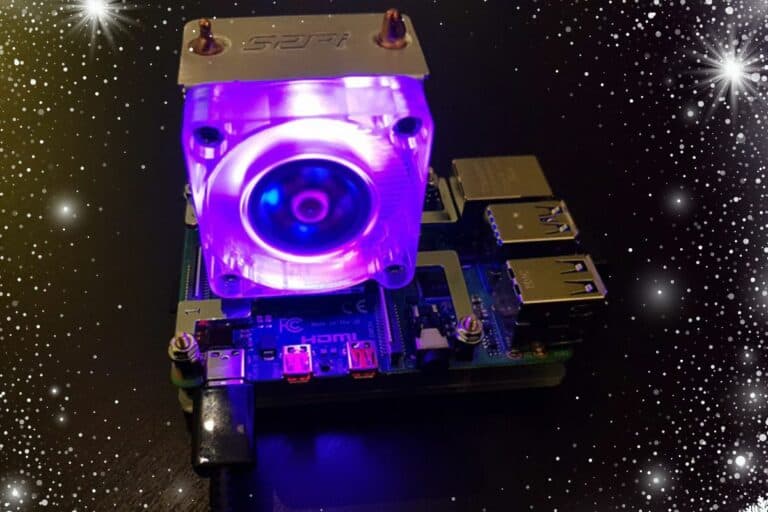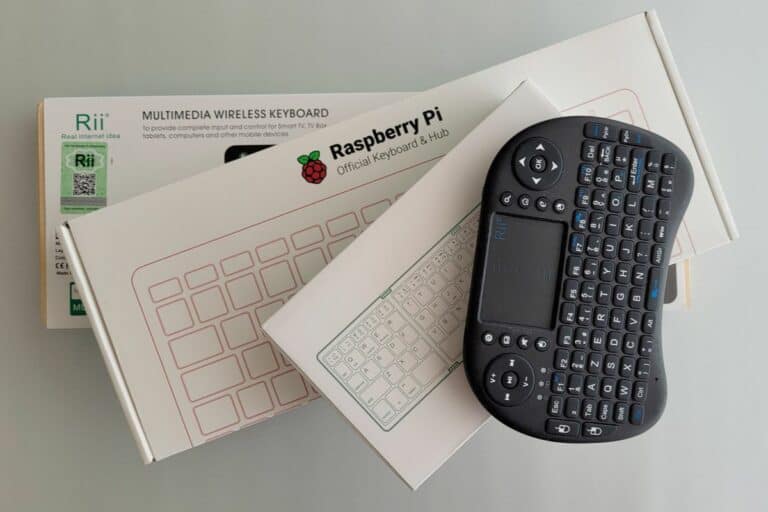Flirc Case Review: Is it Really the Best? (6 Months Usage)
Finding the best case for a Raspberry Pi is not so easy, the perfect one for everything doesn’t really exist, and we all have different uses for our Pi.
I bought the Flirc Case in May 2020 (9 months ago), and I have used it for the most part. So, today I will share with you my honest review about this interesting case for Raspberry Pi.
The Flirc Case is made of aluminum, and brings a beautiful look to your Raspberry Pi, as well as an innovative solution for cooling it.
This case is sold as the perfect fit for a media center usage, but also with a way to access GPIO pins and the SD card slot.
This is the theory you can see on their presentation page, let’s see now how it works in real life, and what you need to know before trying it.
What is my experience with it? I think I have rarely removed my Pi 4 from this case in the past 6 months, and I never switched to another case. I use it almost every day, mainly to test operating systems and software, not so much with accessories and no external circuits. Also, I use it with an Ethernet cable and my favorite Bluetooth keyboard.
Flirc Case Overview
After this short introduction about the case and my usage, let’s see the important things you need to know about it.
Design
The case design is excellent, I think. It really looks nice on your desk or under your TV. The colors of aluminum and black plastic fit wells with the other devices (computers, TV, monitors, etc.).

Compared to the other one I have, it’s the one I really enjoy having next to me on my desk. It makes me think to the first versions of the Intel NUC (like this one).
I don’t know why, but for my desktop usage, I like to have something like a standard computer rather than a messy case where we can see the inside, the GPIO pins and the fan 🙂
Join Our Community!
Connect, learn, and grow with other Raspberry Pi enthusiasts. Support RaspberryTips and enjoy an ad-free reading experience. Get exclusive monthly video tutorials and many other benefits.
Learn more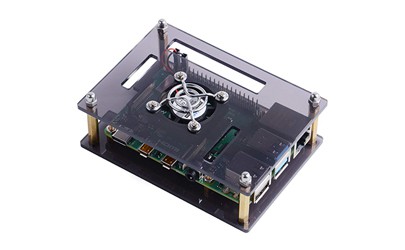
It had other advantages, but not comparable in terms of design.
Price
The Flirc Case may look like a high-end product, with its Apple-style design and innovative features, but it’s not.
You’ll find it easily around $20 (on Amazon for example), so it’s really affordable, and in the price range of other Raspberry Pi cases.
If you are lost in all these new words and abbreviations, request my free Raspberry Pi glossary here (PDF format)!
Download now
| Raspberry Pi Case | Average pricing |
|---|---|
| Argon One | $25 |
| Flirc Case | $16 |
| Argon Neo | $15 |
| Official Case | $10 |
In fact, I bought mine on Pi-Supply to test their services. It’s a well-known Raspberry Pi store located in the UK, and they are shipping worldwide.
I even have a discount code for you if you are interested (RASPBERRYTIPS), you’ll get 10% off on any product, including the Flirc Case (direct link here).

Cooling system
As I mentioned in introduction, the Flirc Case includes a pretty innovative cooling system. There is no fan, no heat sinks that you stick on the CPU, and it’s doesn’t look like a traditional passive case.
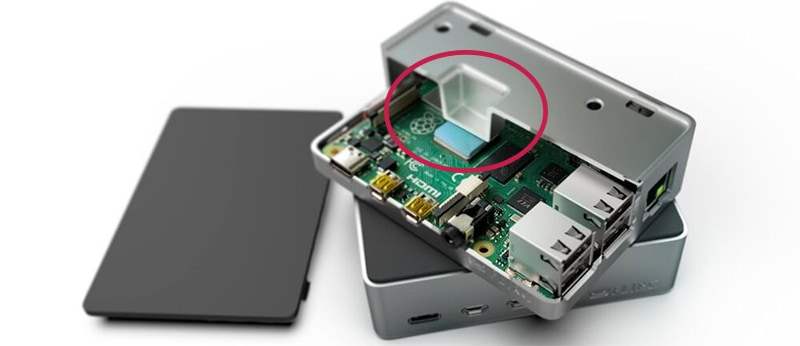
In fact, the top of the case is a heat sink in itself. The aluminum lid touches the Raspberry Pi CPU and transfers the heat outside the case. The case can get a bit warm after a few hours of normal use, but it’s OK, that’s how it works.
Note: there is a thermal pad included, as you can see on the picture. It helps with the conduction of heat from the CPU to the case.
Other Specifications
Except the design and the cooling system, the other features are pretty common:
- The case is easy to mount. There are only 4 screws under it to fix everything. The Raspberry Pi fits perfectly into the case, so it’s not hard to assemble at all.
- The SD card slot is easily accessible. I didn’t have any issue with it. For example, on my Raspberry Pi 3B+ I often put the SD card between the slot and the case, but I never happens with the Flirc case.
- There is a slot under the case to pass a GPIO connector or maybe the camera ribbon. As we’ll see later, it’s not convenient, and you’ll probably never use it this way.
- Finally, there are rubber feet under the case, so that you won’t scratch your desk or TV stand with this case.
My Thoughts about the Flirc Case
What I Like
As I told you, I’m using this case all the time, so it’s a good fit for me and I like this product overall. I will only highlight the two main key points to help you make your decision.
Style
I will be quick on this one, as I already explain in the previous part. But if the design is important for you, it’s probably a solid argument to choose the Flirc Case rather than other options.
If you always have a bunch of wires, HAT and sensors around your Raspberry Pi, it may not be so important, but for a desktop or media center usage, it’s one of the best option.
Cooling System
So, the cooling system is original compared to the competition that will mostly use fans and classic heat sinks. But how efficient is this solution?
I wrote a benchmark in the past, where I compared several cooling solutions, from a basic case to the ICE Tower. You can check it if you are interested.
I did the same test for the Flirc Case, so I can share the results with you and compare it to other options.
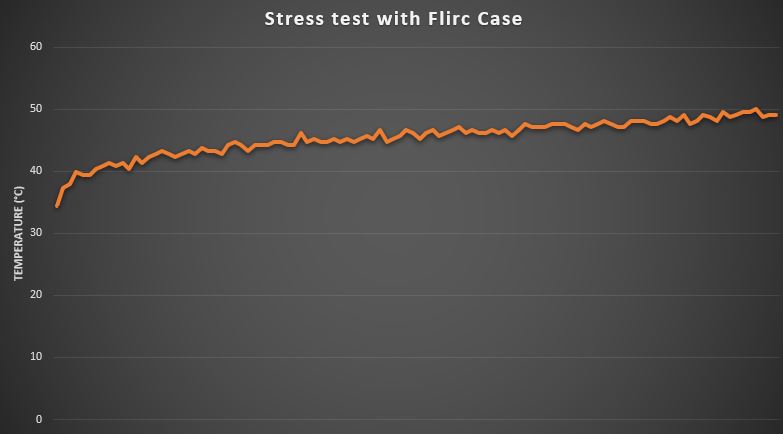
During this test, I stressed the CPU to 100% for 2 minutes, and noted the temperature evolution. As you can see, the Raspberry Pi stays ways below the 80 °C maximum temperature, barely reaching 50 °C after 2min of CPU stress. So, it’s pretty good.
As a comparison, here are the results I got in my benchmark:
| Raspberry Pi 4 cooling solution | Max temperature after a 2 minutes CPU stress |
|---|---|
| No cooling system | 70 °C |
| Heat sinks | 65 °C |
| Basic case with fan | 61 °C |
| Flirc case | 50° C |
| Geekworm passive case | 45° C |
| ICE Tower | 38° C |
The results are pretty good for the Flirc Case. Obviously, it’s not the best case, as a giant fan or an armor case will do a better job, but if the look matters to you, it’s the best choice for a reasonable cooling system.
And silence is really a good thing for that kind of use.
If you are lost in all these new words and abbreviations, request my free Raspberry Pi glossary here (PDF format)!
Download now
Even after 8 hours of work on my Raspberry Pi 4, I didn’t notice any overheating. I’m not doing mining or extreme CPU usage, but once again, it’s perfect for a desktop usage or a media center. It should be nice too for a gaming platform.
What I Don’t Like
GPIO access / Camera
As I told you, this is not a main usage for me, but I know many of you are using the GPIO pins on your Raspberry Pi 4, either to plug an HAT or connect it to an electronic circuit. That’s why I think it’s something important to talk about.
Firstly, if you want to use an HAT on it: it’s not possible. There is no way to plug it with this case. The lid can’t be removed or replaced, so the only solution is to take everything apart. So, it’s probably not a good solution for you if you are using HAT regularly.
Also, if you want to use GPIO pins, it’s probably not the best choice. They explain on their website that you can use a GPIO connector like this one through the slot under the case, but it’s not so convenient.
You have to have it plugged all the time, it will probably touch the case on the top, and you have to keep the case upside down or unstable.
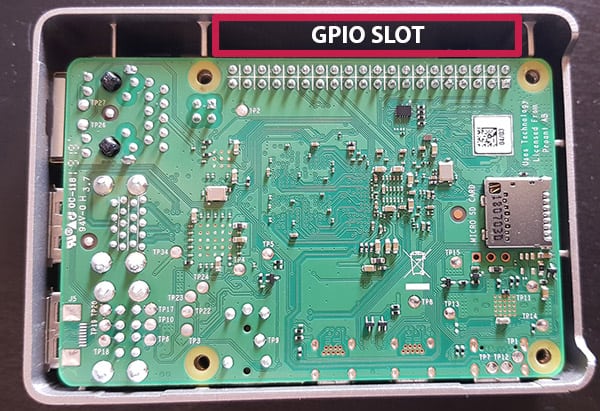
So, if you plan to regularly use the GPIO pins, for a HAT or circuit, I would rather choose another case. For example, the passive case I tested previously was perfect for this.
Once again, the Flirc case is excellent for a desktop usage, not so much for something else.
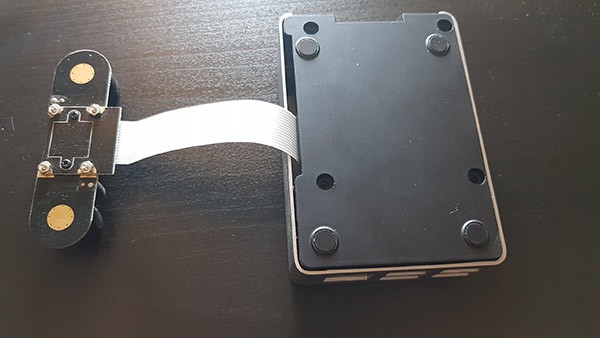
That’s the same thing for a camera. If you use all the time (or never), it’s okay, but if you want to plug it and unplug it regularly, it’s not convenient. You have to unscrew the case each time, there is no way to do this another way.
Wi-Fi Issues
I rarely use the Wi-Fi on my Raspberry Pi. As I already explain in the past, I prefer having a Wi-Fi extender on my desk, and plug the Raspberry Pi to it with an ethernet cable. This way I don’t have to configure the Wi-Fi each time I install a new operating system. You can use that kind of device if you want to do the same thing.
I have seen a few bad reviews on Amazon about Wi-Fi issues with the Flirc case. So, I tested it, thinking it was probably a misuse. Here are the results I got.
My first check with iwconfig and wavemon didn’t show any issue. The power strength and link quality seem similar:
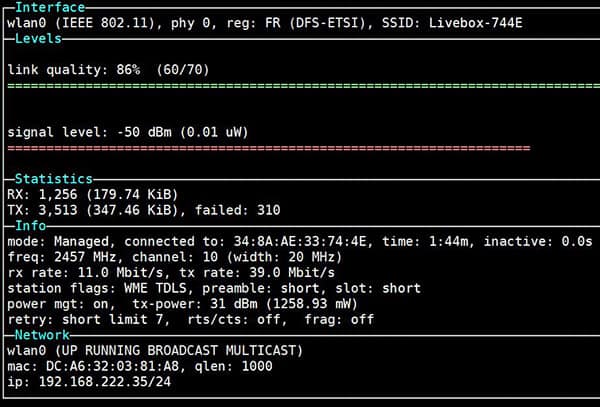
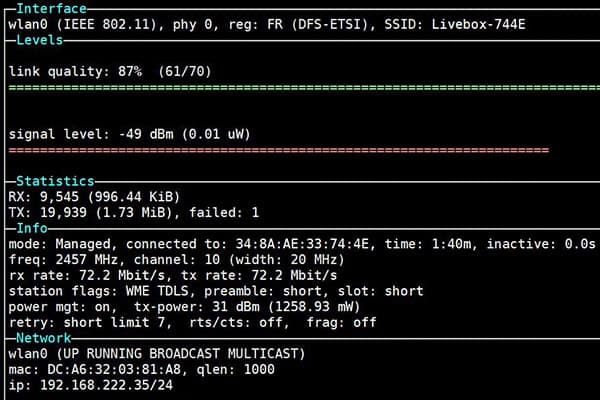
But if you like closely, you’ll notice that the “rx rate” is very different. I thought it was a temporary issue, but when I tested the speed test with the Flirc Case, there was no doubt:

I have a 100 MB Internet connection, averaging around 30-40 MB in Wi-Fi, but only 3 MB with the Flirc Case :/
I don’t know if the Wi-Fi range is affected (it’s possible), but I’m certain your Internet speed will be affected by the aluminum case.
So, it’s something to consider if you have a fast Internet connection, or if you are a bit far away from the Wi-Fi router.
Aluminum
We have seen that aluminum is not a good idea for the best experience with Wi-Fi, but there is also a small downside to it that I want to finish with.
Yes, the aluminum style is great, but if you are using it seriously like me, you’ll plug and unplug things all the time, and you’ll probably make small scratches on it.

After a few months, your case may look like this. I don’t know if you can see all of the scratches on the picture, but you get the idea. You’ll never get this issue with plastic cases.
They have a black version of this case, the Kodi Edition (check the pictures on Amazon). Maybe black aluminum is better to hide this.
Anyway, that’s not a big deal, just something I noticed and wanted to share with you.
It's a free PDF guide containing every Raspberry Pi Linux command you should know!
Download now
In a Nutshell
Before finishing this review, here are in short my thoughts about this Flirc case.
Pros & Cons
| Pros | Cons |
|---|---|
| Beautiful case | Using GPIO and camera ports is not convenient |
| Perfect for desktop, media-center or retro-gaming | Will slow your Wi-Fi connection |
| The cooling system is pretty good, and quiet | Not possible to use HATs with it |
Overall Rating
The Flirc Case is the perfect fit to use a Raspberry Pi as a desktop computer or as a media-center device. Especially on a pretty static installation, when GPIO and camera ports are not required Also, it’s better to use it with an Ethernet cable to keep a decent Internet connection.
If you identified your typical usage in this rating, you can buy yours now, you’ll not regret it. I’m the ideal customer for this case, and as explained at the beginning, I never switched to another case for 6 months. So, it’s excellent:
Still unsure?
If you are not yet convinced that the Flirc case is the best option for you, you can read this other article I wrote on RaspberryTips: I tested all the most popular Raspberry Pi cases and compare them. You should have a better overview of the possibilities after that.
It's a free PDF guide containing every Raspberry Pi Linux command you should know!
Download now
Want to chat with other Raspberry Pi enthusiasts? Join the community, share your current projects and ask for help directly in the forums.
Other Solutions to Consider
If you are not using your Raspberry Pi like me, no worries, I got you covered. I have already tested other options, and I probably have the best one for you:
- If you want a passive case, but are using GPIO ports (with HATs or just wires), you can switch to the armored version. I tested it here.
- If the cooling system on the Flirc case is not enough for you, the only solution I have for the moment, is to switch to the ICE Tower. I reviewed it here, but I don’t know if there is a case for it.
- Finally, if you like everything except the Wi-Fi issue, I don’t really have the best match for this yet. I received the Argon Neo this week and will test it soon, but for now, my best advice would be to use a Wi-Fi extender or a USB Wi-Fi adapter :/
If you have anything to add to this review, any questions, or a request for another review, let me know it the comments below. I will do my best to help you.




